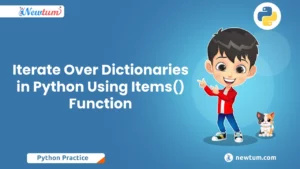Hello guys!! Understanding data types in C is a crucial first step towards mastering this powerful language. Data types are like the building blocks of C programming, defining the kind of data you can work with and how it gets stored and manipulated. They’re essential for efficient coding and avoiding errors. Curious to learn more? Stick around, because we’re about to break down data types in C in a way that’s simple and relatable, just for you!
What Are Data Types in C?
Data types in C define the type of data a variable can hold. They specify the size and type of information that can be stored in memory, allowing efficient utilization of resources. For instance, using a smaller data type like char for single characters conserves memory compared to using int.
Data types are essential for building error-free programs, as they prevent mismatched operations (e.g., adding a string to a number). Broadly, C categorizes data types into three main groups:
- User-defined Data Types: Custom types like
enumandtypedef. - Basic Data Types: Include types like
int,float, andchar. - Derived Data Types: Encompass arrays, pointers, and structures.
Basic Data Types in C
1. Integer (int)
The int data type is used to store whole numbers, making it ideal for operations that involve counting or indexing.
Example Use Case: Keeping track of the number of items in a cart or accessing array elements by index.
int items = 10; // Stores the count of items2. Floating-point (float, double)
Floating-point types, such as float and double, are used to represent decimal numbers. They are essential for calculations requiring precision, such as scientific computations or financial analysis.
Example Use Case: Calculating the value of π or measuring distances.
float pi = 3.14; // Stores the approximate value of pi3. Character (char)
The char data type is used to store single characters, typically requiring 1 byte of memory. It’s ideal for handling small text-like data.
Example Use Case: Storing a grade (e.g., ‘A’) or a simple yes/no indicator (‘Y’/’N’).
char grade = 'A'; // Stores the grade of a studentDerived Data Types in C
1. Arrays
Arrays store a collection of similar data types in contiguous memory locations, making them highly efficient for sequential data processing.
Example Use Case: Storing a class’s marks in an array for batch processing.
int marks[5] = {85, 90, 78, 88, 92}; // Stores marks of 5 students2. Pointers
Pointers store memory addresses, providing flexibility for dynamic memory allocation and efficient array handling. They are integral to advanced C programming.
Example Use Case: Allocating memory dynamically for large datasets or accessing array elements.
int x = 10;
int *ptr = &x; // Pointer storing the address of variable x3. Structures (struct)
Structures group related variables of different data types into a single unit, enhancing readability and maintainability.
Example Use Case: Defining a student record with fields like name, age, and grade.
struct Student {
char name[50];
int age;
char grade;
};
struct Student s1 = {"Alice", 20, 'A'}; // Initializes a student record- operations. The variable ‘isPassed’ is set to ‘true’, printed as ‘1’ indicating true.
Output
Age: 25
Height: 175.50
Grade: A
Distance: 12345.6789
Passed: 1
Use Cases of Data Types in C
In C programming, the correct choice of data type can significantly impact the performance and functionality of your application. Below are some real-world examples of how different data types are commonly used:
Handling Large Datasets
Arrays are invaluable when dealing with large datasets. For example, arrays can be used to store sensor data in real-time systems, where multiple readings are stored sequentially in memory. By using arrays of integers or floats, a program can efficiently process and analyze large volumes of data.
Example:
float sensorData[1000]; // Array to store data from 1000 sensorsDeveloping Embedded Systems
In embedded systems, pointers are often used to manipulate memory directly. When working with microcontrollers or robotics, pointers help allocate memory dynamically, making the system more efficient and responsive. They allow the program to work with memory addresses rather than values, which is essential in resource-constrained environments.
Example:
int *sensorData = malloc(10 * sizeof(int)); // Dynamically allocate memory for sensor dataCreating Modular Code
Structures are used in software development to group related data into a single unit. This is especially helpful in game development, where you might need to define complex entities like players, enemies, or items, each with multiple attributes. By using structs, developers can maintain clean, modular code.
Example:
struct Player {
char name[50];
int health;
int score;
};By choosing the right data types, developers can avoid memory waste, prevent errors, and enhance system performance. Using the wrong type may lead to inefficient memory usage or errors like buffer overflows.
7. Tips for Choosing the Right Data Type
When choosing a data type in C, there are a few key factors to consider:
- Memory Usage: Smaller data types like
charuse less memory thanint. For handling simple values like single characters or small integers, usecharinstead ofintto save memory. - Precision: If your calculations require high precision, consider using
doubleinstead offloat. - Application Requirements: Consider the nature of your application. For example, if you’re developing for an embedded system with limited memory, choosing smaller data types will optimize performance.
Common Mistakes:
One common mistake is using an int for small values when a char would suffice. This unnecessarily wastes memory and processing power. Always evaluate your data type based on the size and precision needed.
Imagine writing and testing your C programs swiftly! Our AI-powered c online compiler allows you to instantly write, run, and test your code. No need for installations, just pure coding bliss! It’s perfect for beginners eager to dive into programming world.
Conclusion
Understanding data types is essential for writing efficient and error-free code in C. By selecting the appropriate data types, you optimize memory usage, improve performance, and prevent errors. Practice using different data types to become a more proficient C programmer.
For further learning, explore topics like “Memory Management in C” or “Advanced Uses of Pointers in C.”
In conclusion, understanding the different data types in C is fundamental to writing efficient code. To delve deeper into coding and enhance your skills, explore more resources like Newtum. Continue learning, practice consistently, and become an adept programmer. Happy coding!
Edited and Compiled by
This blog was compiled and edited by Rasika Deshpande, who has over 4 years of experience in content creation. She’s passionate about helping beginners understand technical topics in a more interactive way.



